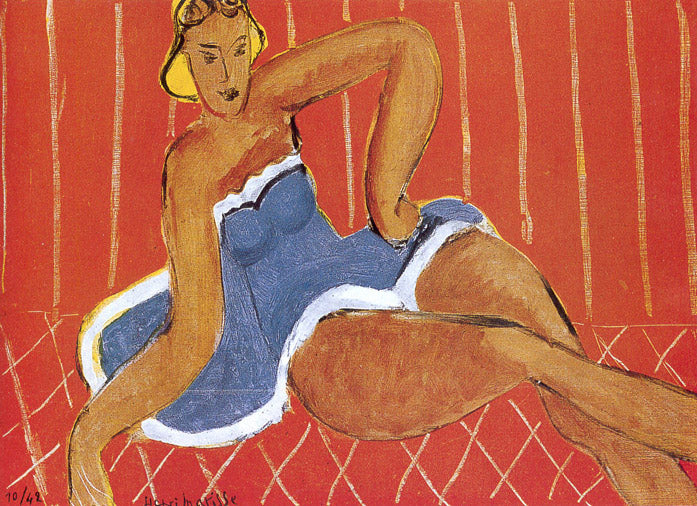Description
Henri Matisse, master indisputable in color and form, presents us in "Dancer Seated on a Table" with a composition that, despite its apparent simplicity, encapsulates the very essence of the artistic exploration that characterized his prolific career. Created in 1942, this work invites us to reflect on the uniqueness of Matisse's vision and his continuous innovation in artistic techniques and concepts.
Upon closely observing "Dancer Seated on a Table", we find a female figure as the central protagonist. The dancer, seated with elegance and serene attitude on a table, is depicted in a position that denotes both tranquility and a subtle contained tension, capturing a moment of repose within what could be interpreted as the interludes between the dynamism of the dance. Matisse, always interested in the human figure, uses soft and curvilinear lines to outline the silhouette of the dancer, showing his concern for harmony and movement, even in stillness.
The use of color in this painting is, as in the vast majority of his work, a testament to his mastery. The chromatic palette is rich and vibrant, with warm tones predominating that contrast with some cooler touches, creating an attractive visual dialogue. The colors not only fill the canvas but also provide an emotional depth that suggests something beyond the merely observable. The choice of vibrant colors like lively red and yellow contrasts with the blue and green tones, generating a chromatic balance that is both visually striking and emotionally resonant.
Regarding the composition, Matisse employs a spatial distribution that directs the viewer's attention to the central figure without detracting from the surrounding elements. The placement of the table and other possible objects, although simplified, is not arbitrary; they contribute to a sense of stability and balance within the painting, subtly but effectively framing the dancer's presence. This apparent simplicity, which is actually the product of great deliberation, is one of the hallmarks of Matisse's genius.
It is also interesting to reflect on the temporal context of the work. During the 1940s, Matisse faced health problems that, far from diminishing his creativity, led him to explore new forms of expression. "Dancer Seated on a Table" can be interpreted as a reflection of this introspection and adaptation, encapsulating in the figure of the dancer the struggle and at the same time the acceptance of the physical and emotional changes he was experiencing.
This painting is part of a series of works where Matisse explored the theme of dance, a recurring motif in his artistic trajectory, which he had previously addressed in his emblematic work "La Danse" of 1910. For Matisse, dance symbolizes vitality, joy, and the release of tensions, and it is notable how these same qualities unfold in "Dancer Seated on a Table".
In conclusion, "Dancer Seated on a Table" is a work that, while not one of Matisse's most famous, encapsulates his great ability to transform the everyday into something extraordinary through the use of color, form, and composition. Each stroke, each chromatic choice, each compositional element, not only shows us a scene of repose but also a profound understanding of the relationship between the human body, its environment, and artistic expressiveness. This painting reminds us why Henri Matisse is an essential figure in the history of modern art, someone who saw the world with unparalleled eyes and knew how to convey that vision in a sublime manner.

